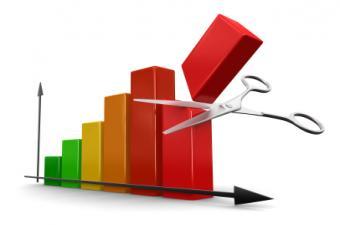While some are asking when the economy will return to normal, others are wondering if this prolonged period of below-potential GDP growth is actually the ""new normal,"" according to a ""report"":http://www.fanniemae.com/portal/research-and-analysis/emma.html from ""Fannie Mae's"":http://www.fanniemae.com (FNMA/OTC) Economic & Strategic Research Group.
[IMAGE]For 2013 and 2014, Fannie Mae projects a continuation of below-potential economic growth, with a 2 percent growth rate expected for 2013, similar to the lackluster performance seen in 2012.
""What we view as sub-par economic growth may actually continue to be par for the course for the near term,"" said Fannie Mae Chief economist Doug Duncan. ""We expect the fiscal policy climate to act as a drag on growth this year with possible implications on the direction of the economy in the long term.""
According to Fannie Mae's report, potentially strong headwinds such as the fiscal cliff and ongoing debt ceiling are likely to suppress consumer spending in the first half off 2013.
[COLUMN_BREAK]But, as Fannie Mae points out, ""[o]nce policy makers resolve the short-term fiscal policy problems, growth should accelerate in the second half of 2013 and carry forward into 2014.""
While GDP growth was described as ""subdued"" in 2012, Fannie Mae noted a couple noteworthy events: the unemployment rate falling below 8 percent for the first time since 2009 and the improvement in home prices, which coincided with a positive annual contribution from residential investment to GDP growth.
The housing sector continues to be viewed as the bright spot in the economy, and Fannie Mae says housing's contribution to economic growth should increase this year and in coming years.
The GSE also pointed to the labor market and low mortgage rates as key driving forces behind the housing recovery.
With home sales, home prices, and home building activity appearing to trend upwards, Fannie Mae expects to see further increases.
Housing starts are expected to grow from about 775,000 units to 950,000 units in 2013. The report did point out that the projected level is far below the peak of more than 2 million units in 2005, but it will still be more than 60 percent above the annual record low in 2010.
As for home sales, Fannie Mae expects existing home sales to rise to an annual pace of around 5 million units in 2013 and 2014 and eventually reach nearly 6 million units in 2016.
Mortgage rates are expected to end 2013 slightly under 4 percent at around 3.8 percent and rise to around 4.2 percent at the end of 2014.
Mortgage originations should also increase and reach $642 billion in 2013 from a forecast of $518 billion in 2012, while refinance activity is expected to slow down and fall to $961 billion from a projected $1.4 trillion in 2012.

 theMReport.com Your trusted source for mortgage banking news
theMReport.com Your trusted source for mortgage banking news









